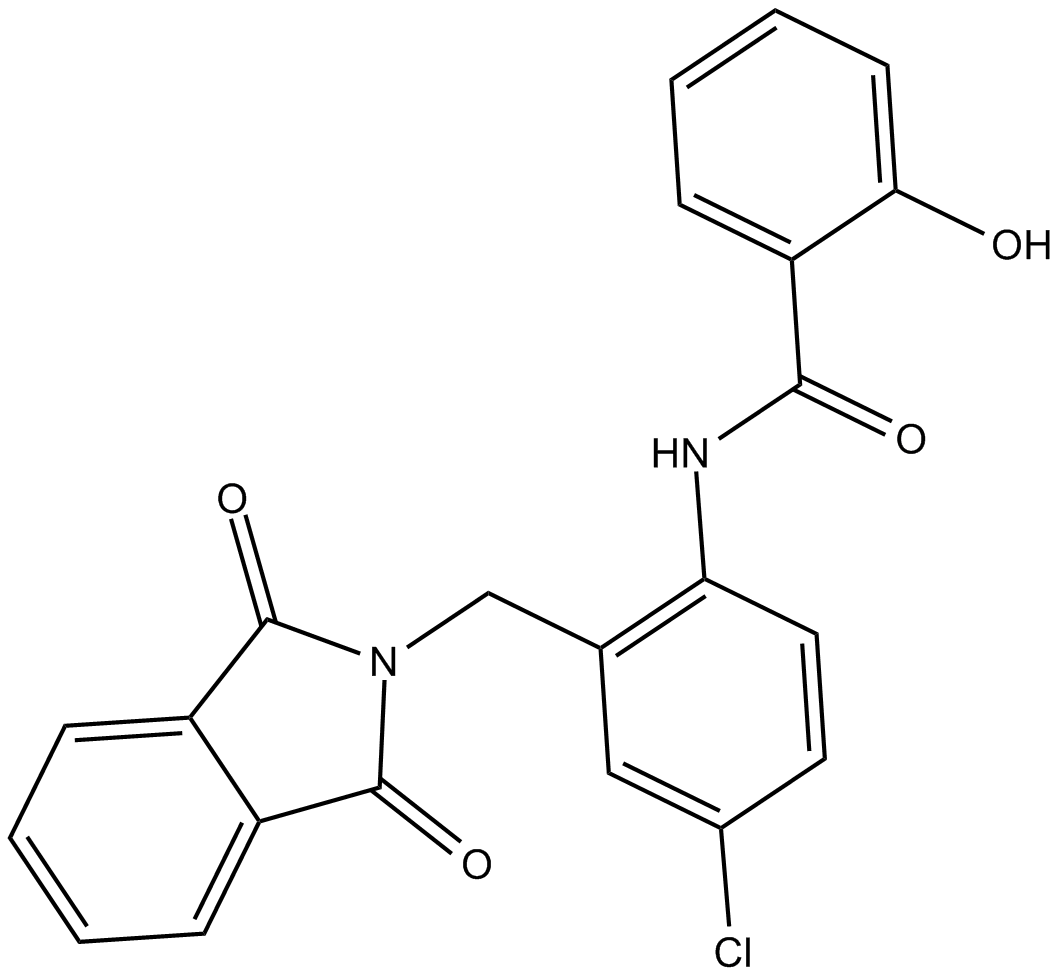CPPHA |
| Catalog No.GC13426 |
A positive allosteric modulator of the mGluR5
Products are for research use only. Not for human use. We do not sell to patients.

Cas No.: 693288-97-0
Sample solution is provided at 25 µL, 10mM.
Description:
IC50 Value: N/A
CPPHA is a selective positive allosteric modulator of mGluR5 receptor. It has no agonist activity alone, but reduces threshold response and shifts dose-response curves to glutamate, quisqualate, and DHPG by 4- to 7-fold to the left in recombinant CHO cells expressing human or rat mGluR5.
in vitro: The selective mGlu5 receptor positive allosteric modulator, N-{4-chloro-2-[(1,3-dioxo-1,3-dihydro-2H-isoindol-2yl)-methyl]phenyl}-2-hydrobenzamide (CPPHA) potentiated the response to a subthreshold concentration of 3,5-dihydroxy-phenylglycine (DHPG) on extracellular signal-regulated protein kinase (ERK) and cyclic-AMP responsive element-binding protein (CREB) activity, as well as N-methyl d-aspartate (NMDA) receptor subunit NR1 phosphorylation in cortical and hippocampal slices [1]. CPPHA potentiated threshold responses to glutamate in fluorometric Ca(2+) assays 7- to 8-fold with EC(50) values in the 400 to 800 nM range, and at 10 microM shifted mGluR5 agonist concentration-response curves to glutamate, quisqualate, and (R,S)-3,5-dihydroxyphenylglycine (DHPG) 4- to 7-fold to the left. CPPHA (10 microM) potentiated NMDA receptor currents in hippocampal slices induced by threshold levels of DHPG, whereas having no effect on these currents by itself. Similarly, 10 microM CPPHA also potentiated mGluR5-mediated DHPG-induced depolarization of rat subthalamic nucleus neurons [2]. CPPHA induced an increase in basal mGluR5-mediated ERK1/2 phosphorylation and potentiated the effect of low concentrations of agonists. In contrast, CPPHA significantly decreased ERK1/2 phosphorylation induced by high concentrations of agonists [3].
in vivo: N/A
Toxicity: N/A
Clinical trial: N/A
Review for CPPHA
Average Rating: 5 (Based on Reviews and 30 reference(s) in Google Scholar.)
Review for CPPHA
GLPBIO products are for RESEARCH USE ONLY. Please make sure your review or question is research based.
Required fields are marked with *




















